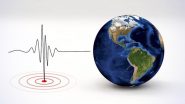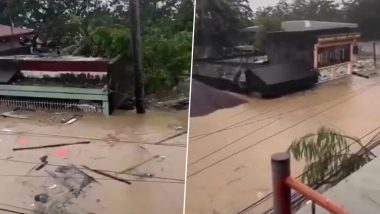Miami, Oct 8 (AFP) Tropical storm Michael strengthened to a Category 1 hurricane Monday as it barreled toward the US Gulf Coast packing maximum sustained winds of 75 miles per hour, meteorologists said.
The weather system was located between Mexico's Yucatan peninsula and the west coast of Cuba by 1500 GMT and was heading slowly towards the northern Gulf Coast of Florida, the National Hurricane Center (NHC) in Miami said.
It is expected to be a major Category 3 hurricane by the time it hits Florida on Wednesday, before moving northeast across the southeastern United States through Thursday.
"#Michael could produce three life-threatening hazards along portions of the northeastern Gulf Coast: storm surge, heavy rainfall, and hurricane-force winds, with storm surge and hurricane watches in effect," the NHC said on Twitter.
"Residents in these areas should follow advice given by local officials."
Heavy rainfall from Michael could produce "life-threatening flash flooding," the NHC said, from the Florida Panhandle and Big Bend region into portions of the Carolinas through Thursday.
The first rains from Michael were already beginning to soak the Florida Keys on Monday, with up to four inches (10 centimeters) expected to fall through Tuesday.
Florida Governor Rick Scott declared a state of emergency for 26 counties.
"We are running out of time," the Republican governor said on Twitter. "TODAY is the day to get a plan, because tomorrow could be too late." "This storm will bring torrential rain, heavy winds and dangerous storm surges to many areas of our state," he tweeted.
Florida State University announced it was closing for the week Tuesday, along with schools in Leon county, home to the state capital Tallahassee.
Tallahassee's Democratic mayor Andrew Gillum, who is campaigning to succeed Scott as governor in next month's elections, suspended his campaign and returned to the state capital to oversee storm preparations.
The Carolinas are on the long recovery from Hurricane Florence, which left dozens dead and is estimated to have caused billions of dollars in damage last month.
It made landfall on the coast as a Category 1 hurricane on September 14 and drenched some parts of the state with 40 inches (one meter) of rain. Last year saw a string of catastrophic storms batter the western Atlantic -- including Irma, Maria and Hurricane Harvey -- causing a record-equaling USD 125 billion (107 billion euros) in damage when it flooded the Houston metropolitan area.
For this hurricane season, the US-based National Oceanic and Atmospheric Administration forecasting service and Britain's Met Office predict between five and nine storms of Category 3 or stronger.
Scientists have long warned that global warming will make cyclones more destructive, and some say the evidence for this may already be visible.
At their most fearsome, these low-pressure weather fronts pack more power than the energy released by the atomic bomb that levelled Hiroshima.
"EVERY FAMILY must be prepared. We can rebuild your home, but we cannot rebuild your life," Scott added. (AFP) SCY
(This is an unedited and auto-generated story from Syndicated News feed, LatestLY Staff may not have modified or edited the content body)













 Quickly
Quickly





















